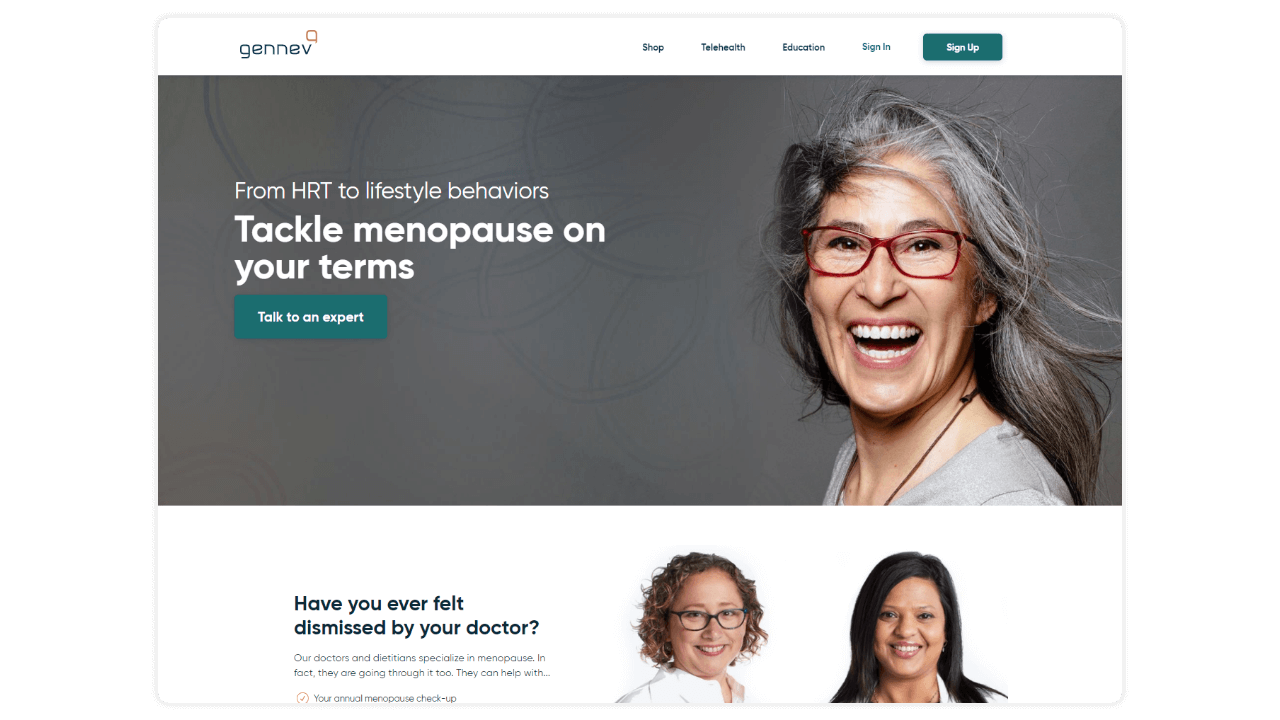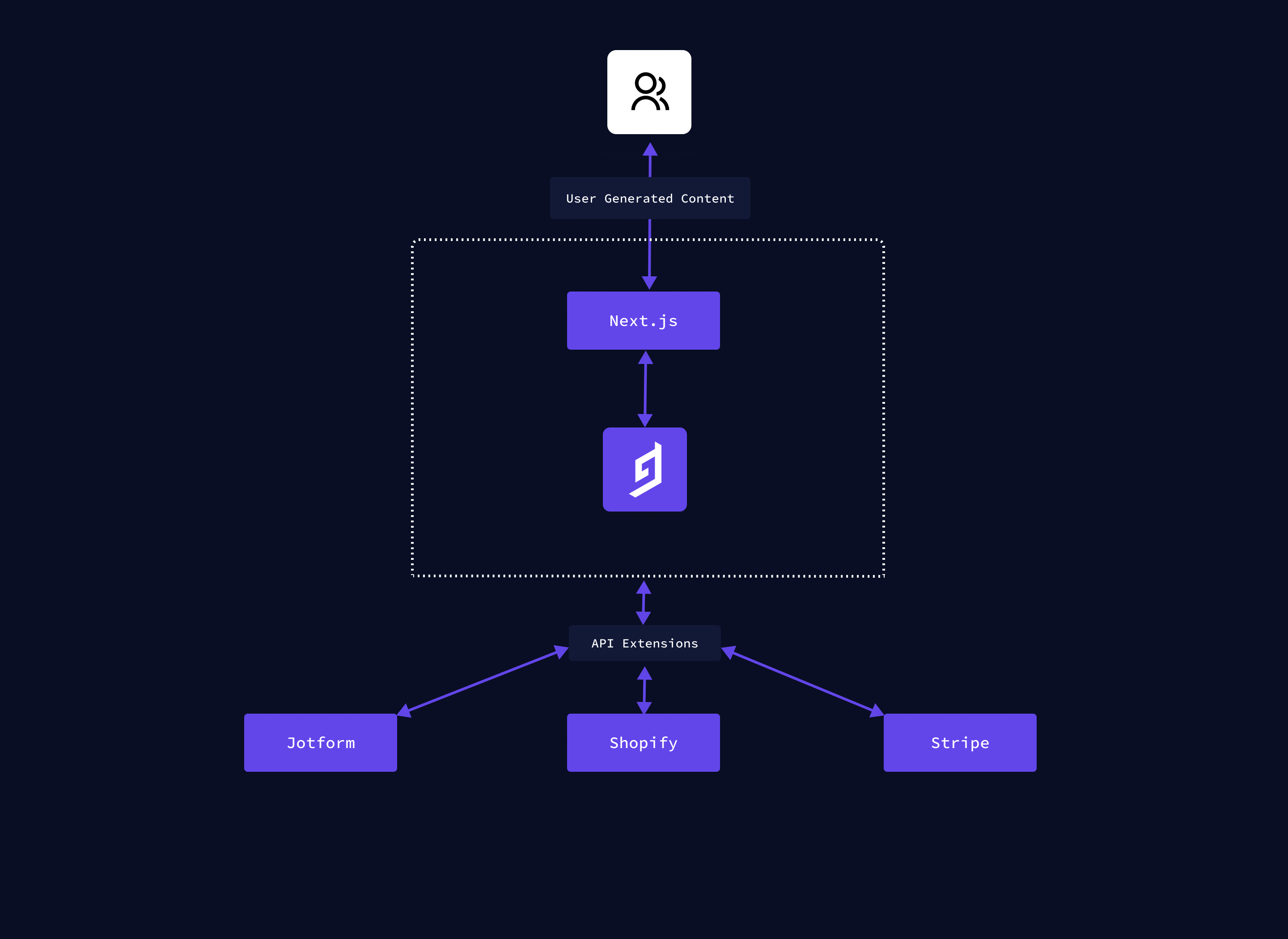SnapshotAnchor
Seattle-based Gennev helps women live healthier and stronger in the second half of their life. Gennev provides answers to common questions surrounding menopause, connects women through groups and online events, and gives information about changes in lifestyle that could be beneficial. They aim to fill the void of a trusted online provider of information and reduce social stigmas around menopause with their online content hub of information.
While the team’s initial website worked well for their current online presence, the Gennev team wanted to migrate to a future-proof tech stack. The Gennev team hoped to connect with women across several channels from their existing website to have more capability for cross platform development. They wanted to implement a more flexible system that could grow with them as their needs change. It was important that the new stack offered scalability without compromising on the editor experience.
The ProcessAnchor
Previously, the Gennev website was implemented on a monolith, and the team were keen to migrate from Sitecore to a Headless CMS. The team chose to move their development in-house and decided to reevaluate if their existing system could accommodate their changing needs. It was clear that the contracted implementation would not give them the flexibility that the Gennev team wanted as a growing, agile company. The previous Sitecore implementation limited the team to take a web-first approach and made creating applications using the existing data too expensive.
Gennev needed a tech stack that would enable them to test different channels without disturbing existing products. They hoped to find a system that had the features they needed, content staging and development environments to name a few, without being weighed down by features they did not need.
GraphCMS being an API-first, technology-agnostic solution, meant the team could build their best-of-breed tech stack using the tools that fit into their preferred workflows. Avoiding strict vendor lock-in means the team could hold on to the experimental mindset that they desired while choosing reliable, future-focused tooling. The Gennev team wanted a tool that could scale with them as their company grew as well as a partner in the early days to help them adjust to the headless approach and structured content modeling.
Why GraphCMS?Anchor
The Gennev team chose GraphCMS for the following reasons.
Intuitive UIAnchor
The intuitive UI made it easy for the Content Team to onboard with minimal training. The team was happy to find that despite being more familiar with monolith CMS they retained much of the same editor control using features such as Content Versioning and Audit Logs to keep track of changes and roll back when necessary.
No-code schema builderAnchor
The flexible content modeling made it easy for the team to build content pages quickly, allowing them to work on new initiatives without losing valuable time with long development implementation. The flexible content modeling demonstrated that GraphCMS would not only suit their current needs but would help them scale and prepare them for an eventual omnichannel approach.
Agile WorkflowsAnchor
The headless approach empowered the content team to be more independent and easily fulfilled their goals of wanting to implement a more agile approach. With GraphCMS, they were able to make changes to content, implement AB Testing, and run campaigns without the need to involve developers. This accelerated content production and reduced bounce rates.
GraphQL Content APIsAnchor
The team were just adapting to migrating from REST APIs to GraphQL, and were excited about the performance benefits it could bring to their site. With help from the GraphCMS support team and the wider GraphQL community, they found the adoption of the new APIs to be seamless. The development team had a smooth transition to the new headless approach while benefiting from the performance boost of their new stack.
The Current SetupAnchor
The new Gennev site is a static site built with Next.JS and React for the application elements of their site. They use 3rd party integrations for the telemedicine portions of the site and Jotform for form data intake. Other systems complementing Gennev’s stack include Shopify and Stripe. Since the creation of the new highly optimized site powered by GraphCMS, there has been a 90% improvement in page loading time.
Results and BenefitsAnchor
- There has been at least a 50 percent improvement in the speed of content creation and editing workflows
- 90% improvement in page loading time.
- The content team is now able to run experiments weekly by making changes to content and performing A/B Testing
- Audit Logs and versioning make it easy to keep track of changes being made to content
- Helpful support from the GraphCMS team


